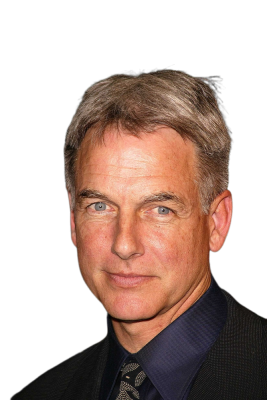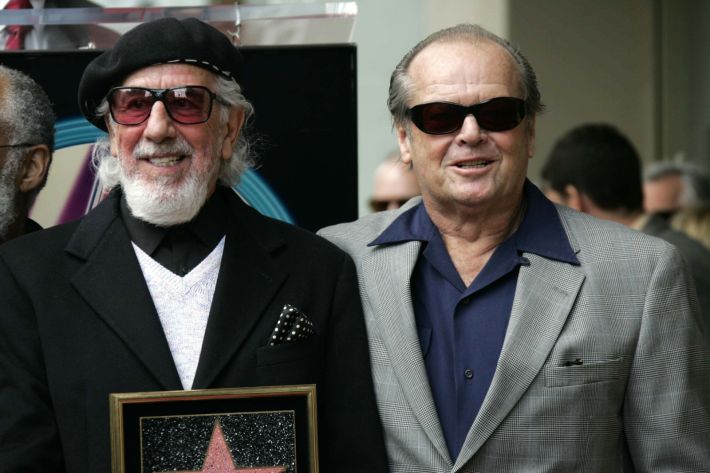Mental Health In Literature, Part 3

Our previous session discussed how literature and the media manipulated public opinion and shaped people’s beliefs and behaviours.
Today, we have a closer look at Fake News. The Obsessive-Compulsive Disorder Spectrum and a book reflecting the counterculture movement and challenges the traditional values, institutionalisation and incarceration in the 1960s.
Can you guess what it is?
More...
Propaganda has historically shaped public opinion by disseminating information or ideas to promote a particular agenda and ideology. It often involves emotional appeals, censorship, and distorted presentation of facts.
Propaganda often involves:
- Deliberately disseminating information or ideas to promote a particular agenda or viewpoint.
- Using emotional appeals.
- Censorship.
- Selective presentation of facts to control public perception.
Today, fake news continues to manipulate public opinion.
Fake news is often compelling because it taps into people’s emotions and pre-existing beliefs. It plays on people’s fears, biases, and desires, making it easier for them to be swayed and believe in the false information presented.
Some evidence suggests that instilling a new positive belief is more effective than rescinding an existing belief in correcting false beliefs. This is because humans tend to hold on to their beliefs, even if proven wrong.
By introducing a new positive belief, individuals may be more inclined to accept the correction as it aligns with their need for cognitive consistency.
Therefore, instilling a new positive belief may be a potentially more effective method for correcting false beliefs. [Lewandowsky et al., 2012]

Fake news continues to manipulate public opinion today by tapping into those emotions and pre-existing beliefs.
Previous examples include Pizzagate, which manufactured ‘news’ that Hillary Clinton ran a child-sex ring, or the Bowling Green Massacre.
Even saying Pope Francis endorsed Donald Trump for president, and the list continues.
We had previously considered Annie Wilkes's behaviour in the psychological horror film “Misery”. Was there evidence pointing to her alleged anxiety disorder?
Organising a collection of porcelain figurines alone is not enough to diagnose someone with either an obsessive-compulsive personality disorder (OCPD) or obsessive-compulsive disorder (OCD).
While both disorders involve obsessive thoughts or behaviours, there are distinct differences between them, which are available in the training section of mentalhealthtraining.info for your perusal.
For example, individuals who have Obsessive-Compulsive Personality Disorder (OCPD) are preoccupied with orderliness, perfectionism, and control.
However, organising a collection of figurines alone does not necessarily indicate obsessive-compulsive personality disorder (OCPD), as many people enjoy organising and arranging their possessions without it causing significant distress or impairing their daily functioning.

Cameron Diaz told Good Housekeeping magazine she is a “neat freak” who has to have everything in its place.
This is in contrast to the retired soccer player David Beckham, who said in a Netflix documentary he must have everything in “perfect symmetry” and spends hours cleaning the house after his family has gone to bed.
Within obsessive-compulsive personality disorder (OCPD) individuals may exhibit a strong need for order, perfectionism, and rigid adherence to rules or schedules. They may feel distressed if their environment is disorganised or chaotic.

Many with OCPD think their way is the “right and best way” and usually feel comfortable with such self-imposed systems of rules.
I know what some of you are thinking: does the fictional character special agent Leroy Jethro Gibbs in N.C.I.S. have an obsessive-compulsive personality disorder behaviour?
It is not believed that Leroy Jethro Gibbs has obsessive-compulsive personality disorder.
He does exhibit some behaviours that are similar to those seen in individuals with the disorder, such as having a very rigid and orderly approach to life and strictly adhering to certain rules and routines.
However, these characteristics are more indicative of him being a decorated Marine Corps officer than of any mental health disorder.
Gibbs' rules are often referenced and implied throughout the show. The rules cover various aspects of his work and personal life. He has flashbacks, which are indicative of Post-Traumatic Stress Disorder (PTSD).
When you consider obsessive-compulsive disorder, OCD is the fourth most common mental disorder after depression, alcohol and substance misuse, and social phobia with a lifetime prevalence.
There are many books, films and papers concerning this impairment. Some of them look at the amusing side of this psychiatric illness, like Sheldon Cooper in The Big Bang Theory with his OCD problems.
There is Monica Geller in Friends, with her quirks also being OCD, Narcissism and People Pleasing characteristics.
Overall, one essential quality to be a successful T.V sleuth is a touch of OCD, as shown in DI Joseph’ Joe’ Chandler.
His OCD is downplayed at the start of the season as the show takes a more team-procedural approach, and then towards the season’s end, the OCD gets referenced and shown more.
The other is Tony Shalhoub; in this case, his Obsessive, Compulsive Detective (OCD) sequel, Monk, is more prominent.
There will be more on Adrian Monk shortly.
Justin Timberlake

The singer-songwriter has a habit of washing his hands and arranging objects in a certain way.
In a 2006 interview with Diane Sawyer, Justin Timberlake shared that he has OCD.
He was diagnosed as a child, and it led him to obsessively wash his hands and arrange objects.
Germophobia or (obsessive-cleanliness disorder) often feels intense distress when they perceive a potential source of contamination, even if it is minimal or unlikely to cause them or others harm. They may constantly wash their hands, disinfect their surroundings, or avoid touching objects or people they perceive as unclean.
Timberlake also mentioned that OCD can bring intrusive thoughts, which are unwanted and sometimes disturbing thoughts that can become obsessions.
George Ezra, the 27-year-old singer-songwriter, also has distressing and intrusive thoughts due to a form of obsessive compulsive disorder, known as “Pure O” is within the OCD spectrum.
I encountered obsessive-compulsive disorder in my first job after finishing school. My manager certainly had many quirks I didn’t fully understand then. As part of a small training team, a colleague and I patiently waited in the staff room before leaving to give an evening lecture.
We decided to use the company vehicle, not wanting to arrive too early, and discussed the evening programme before our departure.
With a mug of hot coffee and the radio on to catch the weather and traffic report, our manager, let’s call him Paddy for convenience, was all set to go home at 6 pm, and he wanted to carry out his nightly ritual.
He closed his office door and also checked all the remaining doors, which were also closed. On entering the staff room, he could see us sitting in conversation but continued with his routine.
Switching off the electrical sockets, pulling out the radio and kettle plug from the wall, and then opening and closing all the windows to ensure they are locked and secured. On his way out, he switched off the lights and closed the door, leaving us chuckling and mumbling something profane in the darkness.
We could then hear him closing and reopening the front door twice before vigorously shaking it to ensure it was secure.
We then waited until Paddy drove past the office before turning the lights back on; during my two-year tenure, the front door framework had to be replaced.
What is an Obsessive-Compulsive Disorder (OCD)

Obsessive-Compulsive Disorder (OCD), is a mental health condition characterised by recurring obsessions (unwanted and intrusive thoughts, ideas, or images) and compulsions (repetitive behaviours or mental acts) that individuals feel compelled to perform in response to an obsession.
People with OCD often experience high levels of anxiety and distress due to their obsessions, and engage in compulsions to try and alleviate these feelings.
A compulsion can either be overt and observable by others, such as checking that a door is locked, or a covert mental act that cannot be observed, such as repeating a particular phrase in one’s mind.
Obsessions typically involve themes such as contamination, symmetry, or order and can cause significant disruption in daily life. Compulsions are often performed in an attempt to negate or prevent the anxiety caused by the obsessions, but they only provide temporary relief.
These compulsions can be physical behaviours like excessive handwashing or mental rituals like counting or repeating specific words.
Monk crime drama

The TV series, created by Andy Breckman, follows the eccentrically loveable and brilliant Obsessive-Compulsive Detective Adrian Monk OCD.
Starring Tony Shalhoub as he solves crimes with remarkable attention to detail and keen observation skills that resemble elements of Sherlock Holmes and Columbo.
The television show not only entertains viewers with its intriguing murder mysteries but also sheds light on the complexities and struggles of living with obsessive-compulsive disorder (OCD) and anxiety.
Those phobias cause problems for Monk and anyone around him as he investigates cases. Through his character, the show explores individuals’ daily challenges with this mental illness, such as compulsive rituals and an overwhelming need for order and cleanliness.
Monk’s obsession with cleanliness, germophobia, and aversion to certain textures and virtually everything else is depicted in a way that both humanises him and educates viewers about the realities of living with OCD.

You may not be aware many celebrities have openly confessed to their OCD tendencies with germophobia.
Jessica Alba, an actress, has said in a 2012 interview with Allure Magazine that she suffers from OCD and is a “germaphobe”.
During childhood, she suffered from many physical illnesses, and I can only assume she had Paediatric Autoimmune Neuropsychiatric Disorders Associated with Streptococcal Infections (PANDAS) during her childhood.
Based upon her documented physical maladies, Streptococcus can lead to various physical illnesses. One common illness is strep throat, where the bacteria infect the throat and tonsils, causing symptoms such as sore throat, difficulty swallowing, and swollen lymph nodes.
Additionally, streptococcal pneumonia is a respiratory infection that can lead to coughing, difficulty breathing, and chest pain.
In severe cases, this infection can even result in pneumonia, which she had on a number of occasions.
Causes of OCD
Obsessive-Compulsive Disorder, which affects 1% to 2% of the population, often runs in families and genes are known to play a large role in determining who develops the disease. However, the identity of many OCD. Genes remains unknown.
Environmental factors such as childhood trauma, stress, and infections have all been associated with the development of OCD.
Additionally, “Monk” delves into themes of loss and trauma. The death of Monk’s wife, Trudy, haunts him throughout the series, leaving him emotionally scarred and consumed by grief.
There is evidence to suggest that trauma can contribute to the development of Obsessive-Compulsive Disorder (OCD).
Trauma, particularly when experienced during childhood or adolescence, can disrupt normal brain development and lead to changes in the brain regions associated with OCD symptoms.
In Adrian Monk’s case, such trauma can also trigger or worsen existing OCD symptoms in individuals who are already predisposed to the disorder. This could have occurred due to the sudden death of his wife, Trudy, activating the stress response systems in the brain, leading to increased anxiety and heightened OCD symptoms.
Adrian Monk’s Obsessive-Compulsive Disorder is portrayed as severe, causing him to have specific rituals, fears, and compulsions that he feels compelled to carry out to maintain a sense of control and alleviate anxiety.
This includes his need for cleanliness, arranging objects symmetrically, and adhering strictly to routines. His relentless pursuit of solving her murder becomes a central driving force behind his work as a detective.
As viewers witness Adrian Monk’s journey towards finding closure and healing, they are reminded of the profound impact that loss can have on one’s mental health.
During specific episodes, Adrian Monk is seen adjusting and manipulating objects to maintain his sense of order and symmetry. However, his love and emotional attachment to his beloved late wife, Trudy, override some of his compulsions.
In these instances, Monk may choose to overlook or ignore his OCD tendencies to accommodate for the sentimental value or significance of particular objects, such as Trudy’s footstool.
It is such a poignant moment when you see a hologram or ghost of Trudy sitting in the chair, legs raised onto the non-symmetric footstool, relaxing. Adrian Monk observes and smiles but continues to pine for her return.
Furthermore, “Adrian Monk” highlights the importance of support systems in managing mental health challenges. Despite his quirks and idiosyncrasies, Adrian Monk finds solace in his loyal assistants Natalie Teeger (Traylor Howard) and Sharona Fleming (Bitty Schram), with the late Stanly Kamel as his psychiatrist Dr. Charles Kroger is vital for anyone struggling with this disorder.
Their unwavering support helps him navigate through difficult moments. It encourages him to confront his fears head-on with Sharona and, later in the series, Natalie at his side with the ever-present hand wipes to enable Adrian Monk to function daily and improve his quality of life to be reinstated to the San Francisco Police Department.
While Natalie and Sharona understand and appreciate Monk’s unique skills as a detective, they often find his compulsions and attention to detail exhausting and frustrating. His excessive attention to minute details and obsession with order and cleanliness can sometimes hinder their work or cause delays.
Moreover, Natalie and Sharona may also become frustrated with the limitations that Monk’s OCD places on his ability to lead an everyday life. This includes difficulties forming relationships, interacting with others, and adapting to changes in his surroundings.
However, it is essential to note that despite their frustrations, Natalie and Sharona both develop a deep understanding and respect for Monk’s condition over time. They appreciate his unique perspective and utilise his skills, adapting their approach to work effectively with him while providing support and sometimes gently pushing him out of his comfort zone.
Overall, the frustration displayed by Monk’s assistants represents the challenges faced by individuals who work with or provide support for someone with OCD. It portrays the delicate balance between supporting and accommodating an individual’s needs while maintaining their mental and emotional well-being.
This emphasis on seeking help and building meaningful connections is a valuable lesson for viewers struggling with mental health issues.
In conclusion, “Adrian Monk” is not just a crime drama series; it is a compassionate exploration of mental health through the lens of a unique detective character. The show’s portrayal of OCD provides insight into this often misunderstood condition while showcasing the strength and resilience of individuals living with it.
Through its themes of loss, trauma, and the power of support, “Adrian Monk” offers a refreshing perspective on mental health that entertains and educates viewers.
The compassionate portrayals of patients in one flew over the cuckoo nest

One Flew Over the Cuckoo’s Nest, a novel by Ken Kesey, is a powerful exploration of mental health and treating patients in a psychiatric institution. Set in the 1960s, the story follows Jack Nicholson, who played the character Randle McMurphy, who earned him an Academy Award for Best Actor.
The character is a charming and rebellious individual who fakes insanity to avoid prison and ends up in a psychiatric hospital, where he challenges the authority of the strict and oppressive Nurse Ratched.
Nicholson’s performance is often praised for its intensity and complexity. Through vivid and sometimes shocking depictions, Kesey exposes the dehumanising and oppressive practices within mental healthcare at the time.
The novel raises important questions about power dynamics, institutional control, and the impact of societal norms on individuals with mental illness. Kesey’s portrayal of patients in One Flew Over the Cuckoo’s Nest is both heartbreaking and thought-provoking.
He presents them as complex individuals with their own unique struggles and desires for freedom. The character of Chief Bromden, a Native American patient who feigns deafness and muteness to avoid detection by the staff, represents the marginalised voices often silenced within society.
His journey towards self-discovery is a metaphor for breaking free from societal constraints and finding one’s true identity. In contrast to Chief Bromden’s quiet rebellion, McMurphy embodies a more overt form of resistance against oppressive systems.
With his larger-than-life personality and refusal to conform to institutional rules, he becomes a symbol of hope for other patients who have been resigned to passively accepting their circumstances.
However, Kesey also explores the limitations of individual rebellion within an inherently flawed system, ultimately highlighting the importance of collective action and solidarity.
One Flew Over the Cuckoo’s Nest challenges readers to confront their own preconceived notions about mental health and examine how societal norms can contribute to feelings of alienation and dissatisfaction.
By exposing the flaws in psychiatric institutions through vivid character portrayals, Kesey encourages us to question traditional models of care and advocate for more compassionate approaches that prioritise individual mechanisms for their well-being.
Overall, One Flew Over the Cuckoo’s Nest serves as a powerful critique of mental health treatment and calls for greater empathy and understanding towards individuals struggling with their mental well-being.
Kesey’s masterful storytelling and complex characterisations make this novel a timeless exploration of the human condition and a rallying cry for change.
Further Reading:
Lewandowsky, S., Ecker, U. K., Seifert, C. M., Schwarz, N., & Cook, J. (2012). Misinformation and its correction: Continued influence and successful debiasing. Psychological Science in the Public Interest, 13, 106–131.
Age at onset and clinical features of late life compulsive hoarding
Catherine R. Ayers, Sanjaya Saxena, Shahrokh Golshan, Julie Loebach Wetherell
Int J Geriatr Psychiatry. Author manuscript; available in PMC 2014 Jul 7. Published in final edited form as: Int J Geriatr Psychiatry. 2010 Feb; 25(2): 142–149.
Binh K. Nguyen, Jessica J. Zakrzewski, Luis Sordo Vieira, Carol A. Mathews. Front Psychol. 2022; 13: 926048. Published online 2022 Aug 1.
Obsessive-compulsive disorder and trichotillomania: a phenomenological comparison
Christine Lochner, Soraya Seedat, Pieter L du Toit, Daniel G Nel, Dana JH Niehaus, Robin Sandler, Dan J Stein. BMC Psychiatry. 2005; 5: 2. Published online 2005 Jan 13.
Pathological gambling and compulsive buying: do they fall within an obsessive-compulsive spectrum?
Donald W. Black, Martha Shaw, Nancee Blum. Dialogues Clin Neurosci. 2010 Jun; 12(2): 175–185.
David Mataix-Cols, Emma Frans, Ana Pérez-Vigil, Ralf Kuja-Halkola, Caroline Gromark, Kayoko Isomura, Lorena Fernández de la Cruz, Eva Serlachius, James F. Leckman, James J. Crowley, Christian Rück, Catarina Almqvist, Paul Lichtenstein, Henrik Larsson
Mol Psychiatry. Author manuscript; available in PMC 2019 Jan 1. Published in final edited form as: Mol Psychiatry. 2018 Jul; 23(7): 1652–1658. Published online 2017
Trauma-related obsessive–compulsive disorder: a review
Kristy L. Dykshoorn Health Psychol Behav Med. 2014 Jan 1; 2(1): 517–528. Published online 2014 Apr 23.
Marriage, mental health and the Indian legislation. S. Nambi. Indian J Psychiatry. 2005 Jan-Mar; 47(1): 3–14.
Anxiety in Boys with Attention-Deficit/Hyperactivity Disorder with and without Chronic Multiple Tic Disorder Jayne Schneider, Kenneth D. Gadow, Judith A. Crowell, Joyce Sprafkin J Child Adolesc Psychopharmacol. 2009 Dec; 19(6): 737–748.
Within- and cross-mental health disorder correlations in husband-and-wife pairs Ray M. Merrill BMC Psychiatry. 2022; 22: 765. Published online 2022 Dec 5.
The Role of Childhood Trauma in Psychosis and Schizophrenia: A Systematic Review Bithaiah Inyang, Faisal J Gondal, Godwin A Abah, Mahesh Minnal Dhandapani, Manasa Manne, Manish Khanna, Sabitha Challa, Ahmed S Kabeil, Lubna MohammedCureus. 2022 Jan; 14(1): e21466. Published online 2022 Jan 21.
DiPietro_Infographic MentalHealth_ProofR3https://www.dipietropllc.com/documents/DiPietro_Infographic-MentalHealth.pdf